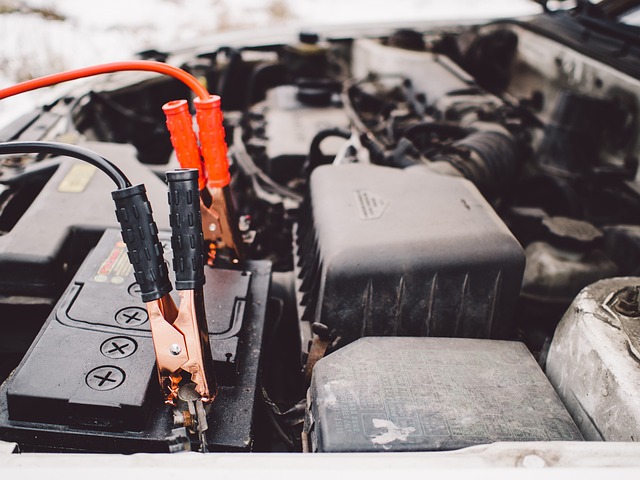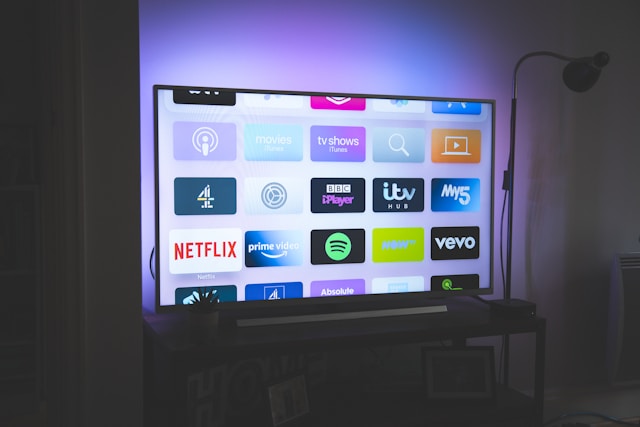With so many brands and models of laptops on the market, choosing what’s best for your situation can be a challenging task.
What Factors Should I Consider When Buying a Laptop for Student Use?
When selecting a laptop for student use, various factors come into play. Consider the following key aspects:
- Portability: Students often need a laptop that is easy to carry between classes. Look for lightweight and compact models.
- Battery Life: A long-lasting battery is crucial for students who may not always have access to power outlets during classes or study sessions.
- Performance: Depending on the student’s major, the laptop’s processing power and RAM should meet the requirements of software used for coursework.
- Storage: Adequate storage is essential for storing documents, presentations, and other academic materials. Consider whether a solid-state drive (SSD) is preferable for faster performance.
- Connectivity: Ensure the laptop has sufficient USB ports, HDMI, and other necessary connections for peripherals and external displays.
- Durability: Students are often on the go, so a durable laptop that can withstand everyday wear and tear is a wise investment.
- Operating System: Choose an operating system that aligns with the student’s preferences and the software commonly used in their academic field.
- Budget: Determine a budget range and explore laptops within that range, balancing features and affordability.
- Keyboard and Trackpad: A comfortable and responsive keyboard is crucial for extensive typing, and a reliable trackpad adds to the overall user experience.
- Display: Consider the size and resolution of the laptop’s display, ensuring it meets the student’s preferences for both productivity and entertainment.
Should I Opt for a Windows, Mac, or Chromebook for Student Use?
The choice between Windows, Mac, or Chromebook depends on the student’s needs and preferences. Here’s a breakdown:
- Windows: Offers a wide range of software compatibility, making it suitable for various academic programs. Windows laptops come in various price ranges, providing options for different budgets.
- Mac: Known for sleek design and reliability, Mac laptops are popular among creative professionals. They seamlessly integrate with other Apple devices and are favored in design and media-related fields.
- Chromebook: Ideal for users heavily reliant on web applications. Chromebooks are budget-friendly, have excellent battery life, and are easy to use. However, they may have limitations with certain software.

How Much RAM is Sufficient for a Student Laptop?
The amount of RAM needed for a student laptop depends on the type of tasks it will handle. Here’s a general guide:
- 4GB: Suitable for basic tasks like web browsing, word processing, and light multitasking.
- 8GB: Ideal for moderate multitasking, running productivity software, and handling more demanding applications.
- 16GB and Above: Recommended for students in design, engineering, or other fields requiring resource-intensive software.
Consider future-proofing the laptop by opting for higher RAM if the budget allows, as software requirements may increase over the course of a student’s academic journey.
Choosing the best school backpack
What Processor Should I Look for in a Student Laptop?
The choice of a laptop’s processor depends on the student’s academic needs. Here are some common processor options:
- Intel Core i3/i5: Suitable for everyday tasks, web browsing, and basic productivity software.
- Intel Core i7/i9 or AMD Ryzen 7/9: Ideal for more demanding applications, such as video editing, 3D modeling, or resource-intensive software used in specific academic fields.
Consider the processor generation and go for the latest available within your budget for better performance and efficiency.
How Important is Battery Life in a Student Laptop?
Battery life is crucial for students who are often on the move. Consider the following:
- Longevity: Aim for a laptop with at least 8 hours of battery life to get through a full day of classes without needing to recharge.
- Quick Charging: Some laptops offer quick-charging features, allowing you to replenish the battery quickly between classes or study sessions.
- Battery Health: Understand the manufacturer’s guidelines for maintaining battery health, such as avoiding deep discharges and extreme temperatures.
What Storage Capacity is Adequate for a Student Laptop?
Choosing the right storage capacity depends on the student’s usage patterns and preferences:
- 256GB SSD: Suitable for basic use, such as document storage and web browsing.
- 512GB SSD: Ideal for students who store a moderate amount of multimedia files, software, and documents.
- 1TB SSD or Higher: Recommended for students in fields like graphic design, video editing, or those who deal with large datasets.
Consider the speed of the storage drive as well, as SSDs offer faster read and write speeds compared to traditional hard disk drives (HDDs).

Is it Worth Investing in a Laptop with a Dedicated Graphics Card for Student Use?
The need for a dedicated graphics card depends on the student’s field of study:
- Integrated Graphics: Suitable for general use, including web browsing, document editing, and basic productivity tasks.
- Dedicated Graphics (Entry-Level): Recommended for students in design or multimedia-related fields, providing better performance for graphic-intensive tasks.
- Dedicated Graphics (Mid to High-End): Essential for students in gaming, video editing, 3D modeling, or other fields requiring advanced graphical capabilities.
Consider the balance between graphics performance and battery life, as dedicated graphics may consume more power.
What Screen Size and Resolution are Ideal for a Student Laptop?
Choosing the right screen size and resolution depends on personal preference and the type of work the student will be doing:
- 13 to 14 inches: Offers a balance between portability and usability, suitable for general use and note-taking.
- 15 to 16 inches: Ideal for students working with design, coding, or other tasks that benefit from a larger display.
- 17 inches and Above: Suited for users who prioritize a larger viewing area, often found in gaming or multimedia laptops.
Consider the screen resolution for crisp visuals, with options ranging from Full HD (1920×1080) to higher resolutions like Quad HD (2560×1440) or 4K (3840×2160).
How Important is the Build Quality and Durability of a Student Laptop?
The build quality and durability of a laptop are crucial for its lifespan, especially in the hands of a student:
- Material: Look for laptops with sturdy materials like aluminum or magnesium alloy for better durability.
- Hinge Quality: A robust hinge ensures the longevity of the laptop, as a weak hinge may lead to display issues over time.
- Keyboard and Trackpad: Consider the comfort and durability of the keyboard and trackpad, as these components are frequently used.
- Military-Grade Durability: Some laptops undergo military-grade testing for durability, ensuring they can withstand various environmental factors.
Should I Consider 2-in-1 Convertible Laptops for Student Use?
2-in-1 convertible laptops, which can function as both traditional laptops and tablets, offer a versatile computing experience. Whether these devices are suitable for student use depends on individual preferences, academic needs, and the nature of the coursework.
Advantages of 2-in-1 Convertible Laptops for Students:
- Flexibility and Versatility: The ability to switch between laptop and tablet modes provides flexibility in how students use their devices. This versatility is beneficial for note-taking, sketching, and collaborative projects.
- Touchscreen Functionality: 2-in-1 laptops often come with touchscreen displays, allowing for intuitive interaction with applications, especially useful for design, art, or engineering students.
- Compact and Lightweight: Many 2-in-1 laptops have a slim and lightweight design, making them easy to carry between classes and study locations.
- Stylus Support: For students in fields that require detailed illustrations or handwritten notes, the stylus support on 2-in-1 laptops can be a valuable feature.
- Tablet Mode for Multimedia Consumption: The tablet mode is ideal for multimedia consumption, enabling students to watch lectures, read e-books, and browse content more comfortably.
- Collaboration and Presentations: 2-in-1 laptops facilitate collaboration through their flexibility in presentation modes, making them suitable for group projects and presentations.
- Creative Applications: Students involved in graphic design, video editing, or other creative pursuits may benefit from the convenience of a 2-in-1 device for hands-on work.
- Long Battery Life: Many 2-in-1 laptops boast impressive battery life, ensuring they can last through a day of classes and study sessions.
- Adaptable to Different Learning Environments: Whether in a lecture hall, library, or studio, the adaptability of a 2-in-1 laptop caters to various learning environments.
- Future-Proofing: As educational methods evolve, the adaptability of a 2-in-1 laptop may be advantageous in accommodating new styles of learning and teaching.
Considerations for 2-in-1 Convertible Laptops:
- Price: 2-in-1 laptops can be more expensive than traditional laptops with similar specifications. Students should weigh the added features against their budget constraints.
- Durability: The flexible hinge mechanism that allows the conversion between modes may pose durability concerns over time. It’s essential to invest in a well-built 2-in-1 laptop.
- Processing Power: While many 2-in-1 laptops offer sufficient processing power, high-end applications may require dedicated graphics cards and more robust processors, factors to consider for certain academic disciplines.
- Storage Capacity: Ensure that the 2-in-1 laptop has adequate storage for academic files, projects, and multimedia content.
- Learning Curve: Some students may find a learning curve when transitioning between laptop and tablet modes or using a stylus for the first time.





